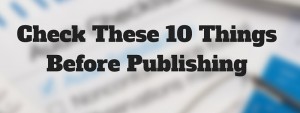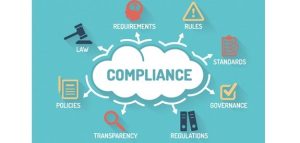Here are a few key factors to keep in mind as you navigate the decision process in selecting your DAM vendor.
Selecting a digital asset management (DAM) vendor and an implementation partner puts in place the foundation you’ll use to grow your DAM. You want that foundation to be as strong and as sturdy as possible.
But what do you base your decisions on? How can you be confident you’re making the right selections for your business? There are a few key factors to keep in mind as you navigate the decision process. In the first article of this two-part series, we’ll focus on selecting your DAM vendor.
Show me the money
While we all wish it wasn’t, budget may be the top consideration in choosing which DAM vendor you’ll move forward with. Don’t get discouraged if your preferred vendor is outside your budget and there’s not enough wiggle room to negotiate lower rates. There’s a wealth of DAM vendors on the market today for every budget. You probably know the big players — Adobe, OpenText, Censhare, etc. — but they’re not the only choices. A well-known name and high price tag do not necessarily translate to a higher quality product.
Much of the success of your DAM will be the result of how you set up your taxonomy, metadata and workflows. The DAM system itself is only the framework for those key elements. And the vendor you start with doesn’t need to be the vendor you stay with forever. You may choose a more basic starter DAM to get the project off the ground and use it as the baseline for demonstrating the value a DAM brings to your organization.
If and when you outgrow your starter DAM and are in the market to upgrade, you’ll have metrics and happy end users to aid you in negotiating a higher budget. You’ll also have valuable insight into your organization’s must-haves and nice-to-haves as you add to your established foundation.
Narrowing down the options
Choosing a vendor with experience working with companies similar to yours may be beneficial, especially during the requirements gathering phase. In preliminary conversations with potential vendors, ask about their existing clients. Are they comparable to your business in terms of size, structure and industry?
If you read my previous article and followed my advice to collect and analyze your content prior to starting your vendor search, you’re prepared to ask a potential vendor if their existing clients have a similar mix of content in terms of file types and sizes. Do they also have similar regulatory and/or legal requirements around some or all of their content?
Be sure to ask for references at the beginning of the process so you have ample time to set up discussions with them. If a vendor can’t or won’t provide any references, that’s a definite red flag.
In conversations with the provided references be sure to ask about both positives and negatives. How specifically did the vendor handle the negatives? Not everything is going to go perfectly smoothly with any vendor, but how the issues are handled and what support is provided makes a significant difference throughout the DAM building process.
Don’t just speak to the references provided by the vendor. Lean on your network to obtain a few references of your own. Utilize your LinkedIn contacts, reach out to colleagues you’ve met at conferences, or speak to former co-workers who have moved on to new companies and new DAMs. The vendor will provide you with references that they’re confident will speak highly of them, but you want the good, bad and the ugly.
If you have either existing or future systems on your roadmap that will integrate with the DAM, such as websites, product information management (PIM) or workflow management tools, ask the vendor about how easily their DAM integrates with those specific or similar systems. It’s also helpful to ask any references you consult about their experiences setting up and maintaining integrations with the DAM.
Meet and greet
Once you’ve got your short list of potential vendors, it’s time to schedule demos. This is where the fun begins and you get to see some DAMs in action. Before you bring a vendor on-site, you’ll need to put together a list of use cases you want them to cover in their demo.
When gathering your use cases, include all of your stakeholders and make sure you’re getting the perspective of all categories of end users, from uploaders to downloaders and everyone in between. And don’t forget about your IT and Legal department representatives. They’ll have specific requirements and concerns outside of those of the typical day-to-day end users.
This is not the time to hold back and carefully curate your wish list. You really want to see all that the DAM can do. In the interest of time though, separate your use cases into the must-haves and nice-to-haves to make sure you get through all the must-haves. What are the deal breakers in terms of requirements your DAM must meet?
Make sure your use cases cover the entire asset workflow from upload to download, including metadata, approvals, versioning, searching and archiving.
- What type of asset security and permissioning do you need?
- Are you interested in AI capabilities or other automation?
- Does your DAM need to accommodate files and metadata in multiple languages and support users who speak languages other than English?
- How about your integration needs?
While you’re putting together use cases, gather a set of your company’s assets and request that the vendor use those for their demo. Make sure you have a variety of file types and sizes. Not only do you want to make sure their DAM accommodates all of your required file types and sizes, but it gives you a better idea of the final product to see your own assets flowing through the DAM.
Think of it in the same way as buying a house and picturing your belongings in the space during the showing. You also want to see how the vendor handles assets that are new to the system and not part of their standard polished and rehearsed demo. If an error occurs during the demo with one of your files, how do they handle it?
Too good to be true or the perfect fit?
Beware of too many yeses as you ask questions during the demo. Make sure the vendor is clear about which features and functions are out of the box and which are custom. The vendor may be telling you over and over that they can customize the system to give you anything you want, but that’s not necessarily a good thing. Not only can that quickly drive up costs and prolong your project timeline, but over-customization can lead to performance and stability issues. In some cases, it can also prohibit future enhancements and upgrades.
If you’re told that specific features you’re requesting aren’t available now but are on the roadmap for a future release, get a sense of the timeline. If there’s no specific release date or at least a projected time range, be wary. You could be waiting years if you see the new features at all without having to go the custom route.
Ready to build
Take your time and be confident in your vendor selection. Don’t rush through the process and don’t be afraid to keep asking questions if something isn’t clear or seems too good to be true. The sturdier the foundation, the stronger and more successful your DAM will ultimately be.
The post How to build your DAM foundation appeared first on MarTech.
MarTech(26)
Report Post






